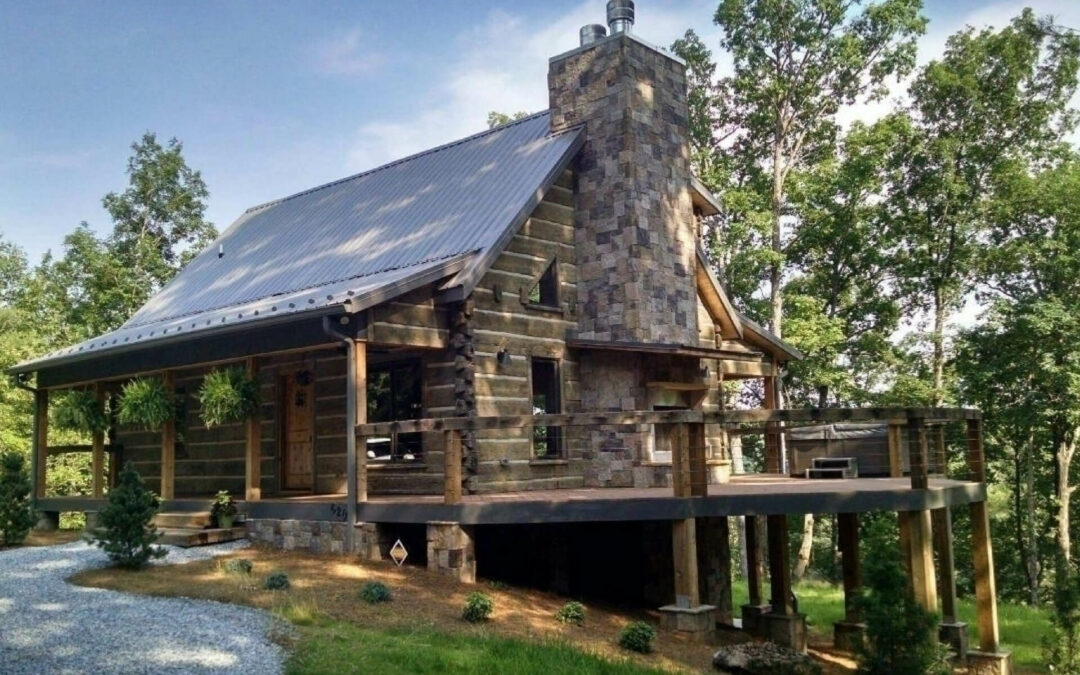When it comes to constructing a log cabin, choosing the right building materials is of utmost importance. The materials you select will not only determine the overall durability and longevity of your cabin but also the aesthetic appeal and energy efficiency. In Asheville, where log cabins are prevalent, it is essential to understand the basics of log cabin construction and the role that the materials play in the process.
Understanding the Basics of Log Cabin Construction
Log cabin construction is a specialized craft that requires careful planning and meticulous execution. It involves the assembly of interlocking logs to create the structure of the cabin. While log cabins exude rustic charm and natural beauty, they also need to withstand various environmental factors such as rain, snow, and extreme temperature fluctuations.
Importance of Choosing the Right Building Materials
Choosing the right building materials for your log cabin is crucial for several reasons. Firstly, the materials should be able to withstand the test of time and weather. They should be resilient to moisture and rot, as well as resist pests such as termites. Secondly, the chosen materials should contribute to the overall energy efficiency of the cabin, helping to maintain a comfortable interior temperature throughout the year. Lastly, the materials should complement the design and aesthetic vision you have for your log cabin.
When it comes to selecting the building materials, there are several options to consider. One popular choice is using solid logs, which provide a traditional and authentic look. These logs are carefully selected and milled to ensure a tight fit and proper insulation. Another option is engineered logs, which are made by compressing wood fibers and adhesives. These logs offer enhanced stability and resistance to settling, making them a reliable choice for log cabin construction.
Key Elements of Log Cabin Design
When designing a log cabin, several factors come into play. From the size and layout to the roof style and windows, each element contributes to the overall look and functionality of the cabin. The choice of building materials will largely depend on these design decisions. For instance, if you opt for a traditional cabin with a steep roof, certain roofing materials will be more suitable than others. Similarly, the choice of wood for the construction will impact the cabin’s appearance and structural integrity.
One important aspect of log cabin design is the incorporation of windows. Windows not only provide natural light and ventilation but also offer breathtaking views of the surrounding landscape. The size, placement, and style of windows can greatly enhance the overall aesthetic appeal of the cabin. Additionally, the choice of window frames and glass can impact the cabin’s energy efficiency, with options such as double-glazed windows providing better insulation.
Another key element to consider is the interior layout of the log cabin. The arrangement of rooms, the inclusion of a loft or mezzanine, and the positioning of essential amenities such as bathrooms and kitchens all play a role in creating a functional and comfortable living space. Careful consideration should be given to optimizing the use of space while maintaining the cozy and inviting atmosphere that log cabins are known for.
Exploring Different Types of Wood for Log Cabins
Wood is the primary building material used in log cabins, and different types of wood offer distinct characteristics and benefits. A few popular wood options for log cabin construction are pine, cedar, and cypress.
Characteristics of Popular Wood Types
Pine is a commonly used wood due to its availability and affordability. It has a light color and can be stained to achieve various finishes. Cedar, on the other hand, is known for its natural beauty, durability, and resistance to insects and decay. Cypress, with its distinct grain pattern and resistance to rot, is also a popular choice.
Pros and Cons of Various Wood Options
While pine may be more budget-friendly, it is less resistant to rot and decay compared to cedar and cypress. Cedar, despite its many advantages, can be more expensive than other options. Cypress is highly durable but may require more maintenance to preserve its natural color and finish. It is important to weigh these pros and cons when selecting the wood for your log cabin.
The Role of Insulation in Log Cabins
Insulation is a crucial element in log cabin construction, as it helps regulate the internal temperature and energy efficiency of the space. Without proper insulation, log cabins can become excessively hot in summer and cold in winter. So, what are the different insulation options available for log cabins?
Types of Insulation Suitable for Log Cabins
Fiberglass insulation, spray foam insulation, and rigid foam insulation are among the common types suitable for log cabins. Fiberglass insulation is cost-effective and easy to install, while spray foam insulation provides excellent air sealing and reduces energy consumption. Rigid foam insulation offers high thermal resistance and is particularly useful for insulating foundation walls.
Insulation and Energy Efficiency in Log Cabins
Proper insulation significantly contributes to the energy efficiency of your log cabin, reducing heating and cooling costs. It helps create a comfortable living environment by minimizing drafts and ensuring consistent temperatures. Additionally, adequate insulation can enhance the acoustic performance of the cabin, reducing noise transmission from outside.
Durable Roofing Materials for Log Cabins
The roof of your log cabin plays a crucial role in protecting the entire structure from the elements. It must be durable, weather-resistant, and complement the overall design of the cabin.
Comparing Different Roofing Materials
There are various roofing material options for log cabins, each with its own advantages and considerations. Asphalt shingles, metal roofs, and cedar shakes are commonly used materials in log cabin roofing.
Maintenance and Longevity of Roofing Materials
Asphalt shingles are widely used due to their affordability and ease of installation but may require periodic maintenance and replacement. Metal roofs offer exceptional durability and can last for several decades with minimal maintenance. Cedar shakes provide a natural, rustic look, but they require regular upkeep to prevent moss or rot.
Selecting the Right Flooring for Your Log Cabin
Choosing the right flooring for your log cabin is not only important for aesthetics but also for functionality and durability. Factors such as foot traffic, moisture resistance, and maintenance requirements should be considered.
Evaluating Different Flooring Options
Hardwood flooring, laminate, and tile are popular flooring choices for log cabins. Hardwood floors offer timeless beauty and can be refinished if needed. Laminate flooring provides a cost-effective alternative that can mimic the look of hardwood. Tile flooring is ideal for high-moisture areas like bathrooms and kitchens.
Factors to Consider When Choosing Cabin Flooring
Several factors should influence your decision when selecting flooring for your log cabin. These include the cabin’s location, the level of foot traffic, the presence of pets or children, and your overall design aesthetic. Ultimately, you want to choose a flooring option that withstands the demands of your lifestyle while enhancing the natural charm of the log cabin.
When embarking on your log cabin construction journey in Asheville, make sure to pay careful attention to the building materials you select. By understanding the basics of log cabin construction, exploring different wood options, considering insulation and roofing materials, and choosing the right flooring, you can create a log cabin that not only stands the test of time but also perfectly encapsulates the beauty of Asheville’s natural surroundings.
Discover the Smart Choice for Your Asheville Log Cabin
Ready to build a log cabin that embodies the essence of Asheville while offering unparalleled durability and efficiency? Look no further than Smart Logs of the Carolinas. Our concrete logs provide the timeless beauty of wood without the susceptibility to insects, decay, or weather damage. Embrace an eco-friendly, low-maintenance solution that’s simple to install and cost-effective over time. Experience the peace of mind that comes with fire resistance, energy efficiency, and the preservation of natural resources. For a log cabin that’s as smart as it is stunning, Contact Us! and let’s bring your dream home to life.

